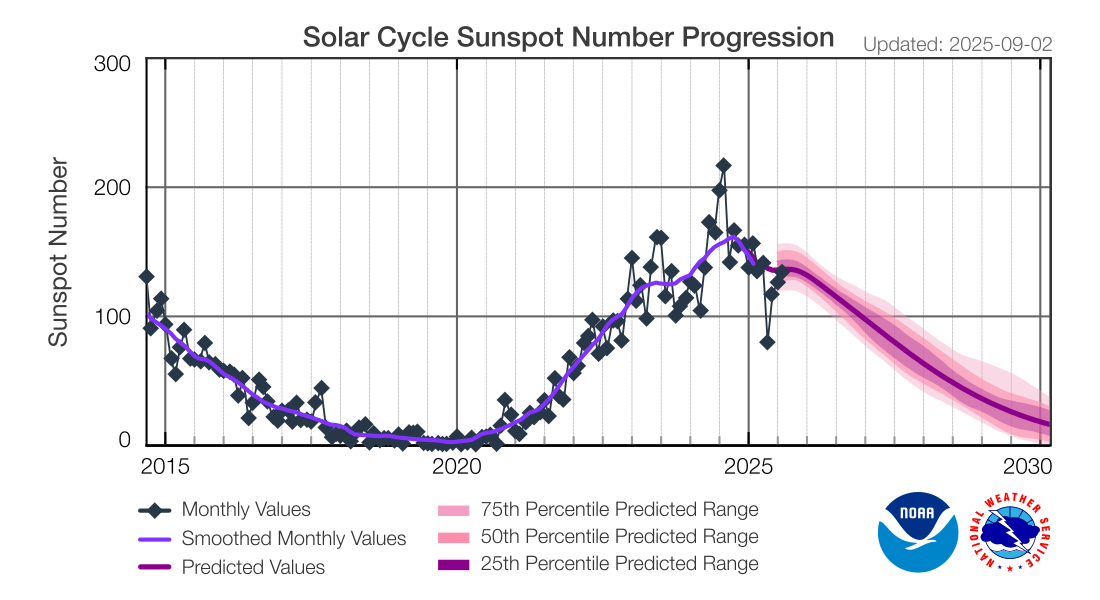ACIS Instrument Update
Gregg Germain, for the ACIS Team
The Advanced CCD Imaging Spectrometer (ACIS) continues to operate nominally and produce high-quality data after more than twenty-five years in orbit. All ten CCDs are fully functional and all electronics are operating on the primary units without any failures or degradation. ACIS flight software is operating well and has been patched multiple times since launch, including bug fixes, improvements to on-board processing, and enhancements to the flight software capabilities. ACIS continues to be the workhorse for Chandra science, being used in ~90% of science observations. All indications are that ACIS is capable of observing for many more years to come.
Chandra General Observers (GOs) should be aware that the ACIS Focal Plane (FP) temperature will be, on average, higher for their observations than in previous cycles. Observers are instructed to select four or fewer required CCDs unless the science case strongly demands additional chips. Having observers identify only the requisite number of CCDs is very helpful in keeping the focal plane and electronics temperatures within the desired operating ranges for as long as possible. When more CCDs are desired but not required, the observer indicates this by specifying optional chips. This designation allows Mission Planning to turn optional chips on, in priority order, to maximize the scientific return of the observation. These optional chips are numbered in order of increasing importance, such that "OFF1" will be the first chip to be dropped if needed.
The ACIS Instrument, Chandra Calibration, and CXC Data Systems teams have implemented a temperature-dependent charge transfer inefficiency (CTI) correction that restores some of the performance lost when the FP warms above −119.7 °C. The CXC now identifies observations that do not require the best spectral response from ACIS and schedules those observations with predicted FP temperature values up to −105 °C. For observations where gratings are not inserted, the accuracy of this temperature-dependent CTI correction also depends on whether or not the CCD in question are front-illuminated (FI) or back-illuminated (BI), with the temperature dependence of the BI CCDs being not as severe as the FI CCDs. In practice, for these warm-ACIS observations, most of an observation will be executed at temperatures below these limits; the ACIS temperature depends on the Solar pitch angle of the spacecraft, and so it is never at a stable value for an observation but is always rising or falling. For further information on the CTI correction, see the Chandra Calibration Update in this issue.
The orbit of the Chandra spacecraft is continually evolving from year to year. The solid angle of the Earth in the radiator field of view increases as altitude decreases, often resulting in higher FP temperatures near perigee. In addition, the changing orbit causes Chandra to traverse different sections of the Van Allen radiation belts. The as-yet mission minimum perigee altitude of ~1000 km occurred in July 2023, and perigee altitudes are now increasing—but they remain somewhat low, with current perigee altitudes of ~5600 km. ACIS has suffered no ill effects from the perigee altitude changes, and, since the perigee is now back to altitudes previously experienced, no impact is expected for at least the next five years.
A consequence of using ACIS as the primary radiation monitor for Chandra is that at least one FI CCD must be active for every observation: the Txings algorithm (see Issue 33) is significantly more sensitive for data from FI chips than from BI chips. Chandra GOs should thus be aware that they are required to have at least one FI CCD on for their observations. The ACIS Team continually monitors the performance of the Txings radiation monitor and tunes the algorithm and parameters whenever necessary. The ACIS Team built, tested, and deployed a new Flight Software Patch—with an updated Txing algorithm—to perform a more precise estimate of ACIS exposure times and flux rates, covering all possible ACIS operating modes (timed exposure and continuous clocking).

Figure 1: Progression and prediction of solar sunspot numbers from 2015 Through 2030. Prepared by the U.S. Dept. of Commerce, NOAA, Space Weather Prediction Center (SWPC).
We are just beyond the peak of the present Solar Cycle. Figure 1 shows the observed monthly solar sunspot count over the past decade, and the predicted count values through 2030. There have been eight shutdowns caused by high levels of radiation since June 2024. During a radiation shutdown, ACIS is moved out of the focal position of the High Resolution Mirror Assembly (HRMA), and radiation sensitive components in the electronics are powered down; this is done to protect the ACIS CCDs and electronics. Given the present high level of Solar activity, we anticipate that the Txings algorithm will trigger several times over the coming year, protecting ACIS from preventable radiation damage. The downtime during a radiation storm depends upon the complexity of the storm, with the average down time during radiation shutdowns since last June being ~56 hours. As a reminder for all observers, any observations scheduled during a shutdown are only postponed: all observations are eventually executed.